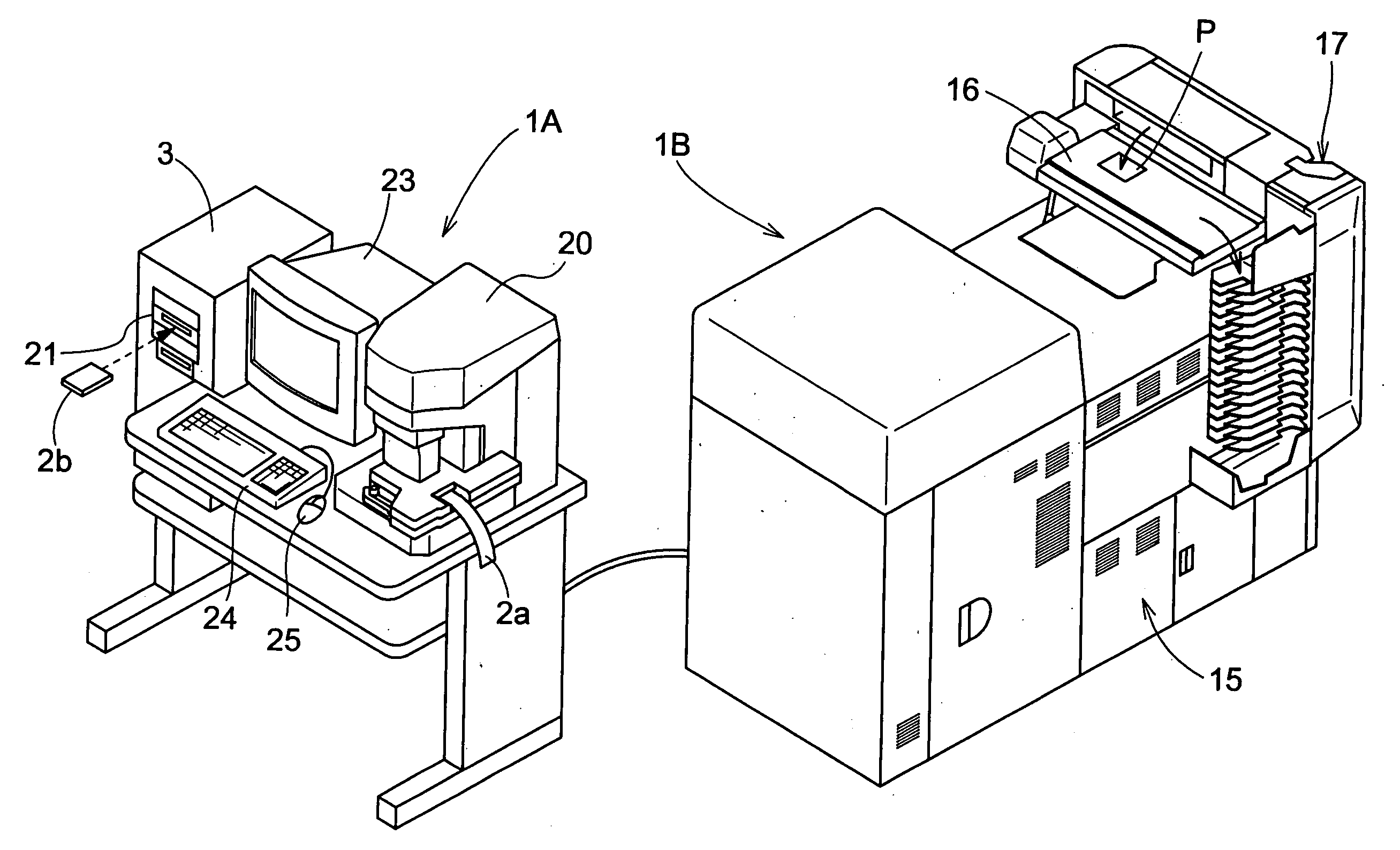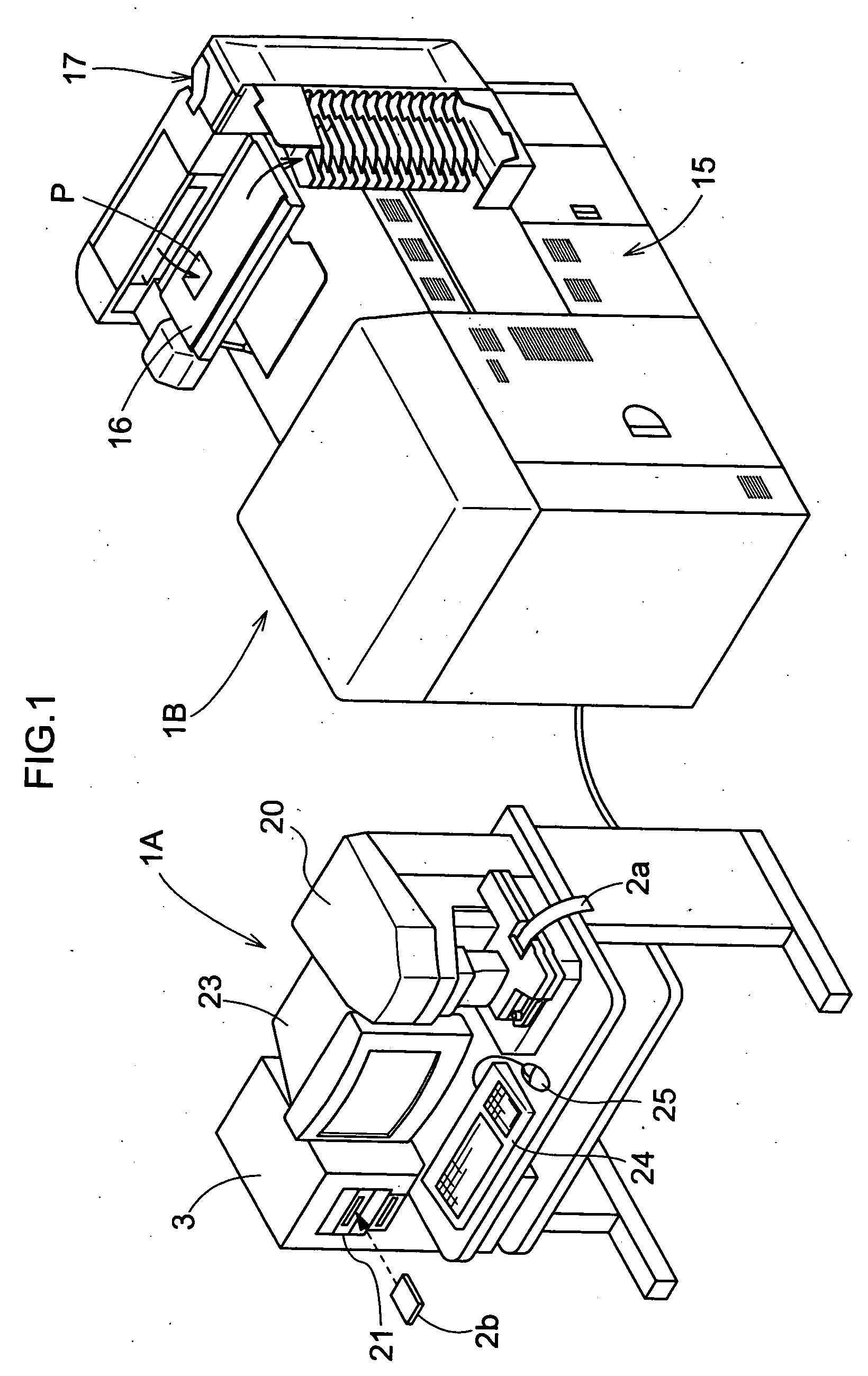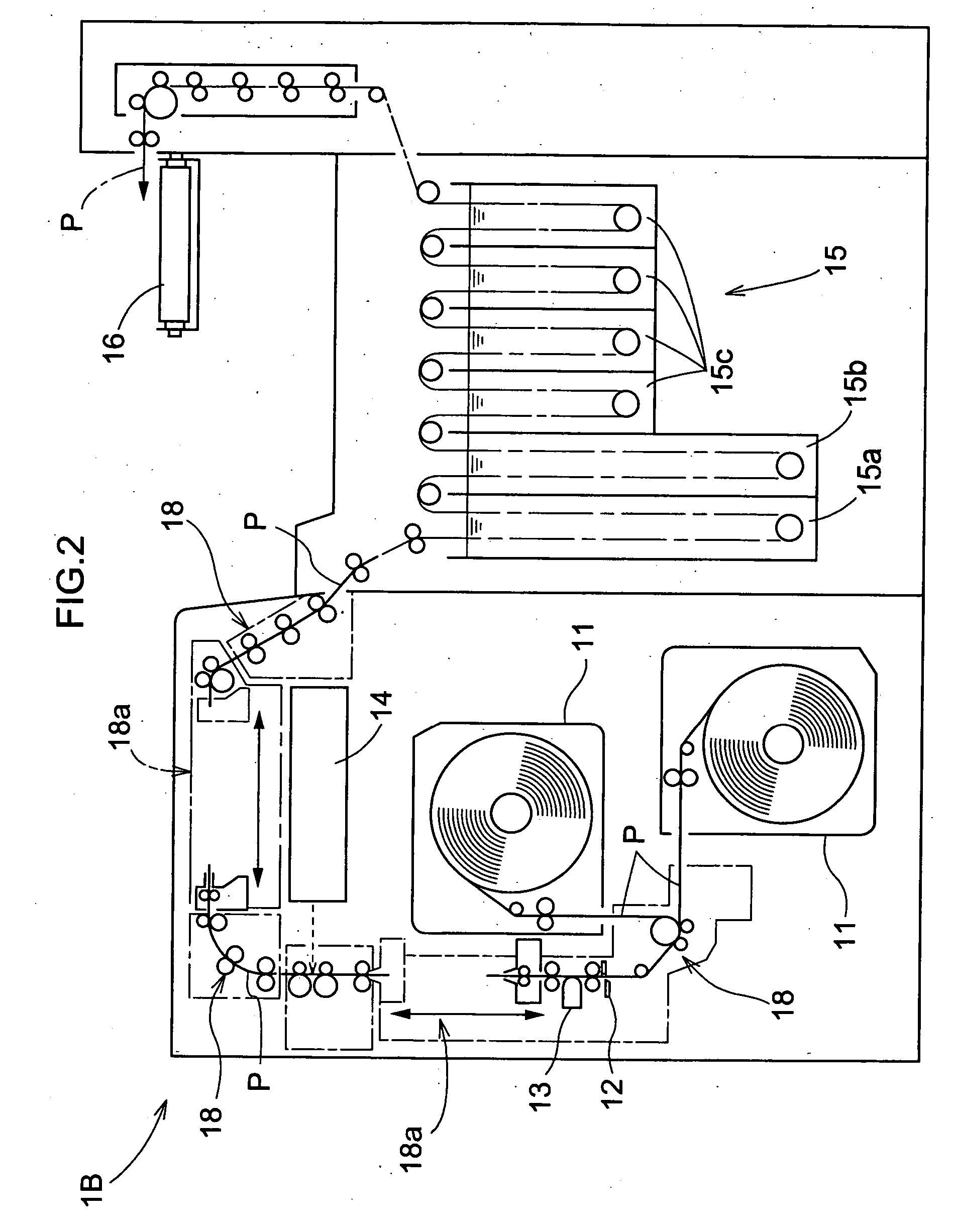Image processing method and apparatus for red eye correction
a technology of red eye correction and processing method, which is applied in the field of image processing technique, can solve problems such as deterioration, rather than improvement, of photographic quality
- Summary
- Abstract
- Description
- Claims
- Application Information
AI Technical Summary
Benefits of technology
Problems solved by technology
Method used
Image
Examples
Embodiment Construction
[0029] Preferred embodiments of the present invention will be described in details with reference to the accompanying drawings.
[0030]FIG. 1 shows an outer appearance of a photographic printing system employing the red eye correction technique of the present invention. As shown, this printing system consists mainly of a printing station 1B as a photographic printer for effecting exposure and development on a print paper P and an operating station 1A for processing photographic images taken from a developed photographic film 2a or various image input media such as a memory card 2b for a digital camera and effecting production / transmission of print data to be used in the printing station 1B. This photographic printing system is known also as “digital mini-labo”. As best understood from FIG. 2, in the printing station 1B, a print paper P stored in the form of a roll in either one of two print paper magazines 11 is drawn out and cut by a sheet cutter 12 to a print size strip. On this pr...
PUM
 Login to View More
Login to View More Abstract
Description
Claims
Application Information
 Login to View More
Login to View More - R&D
- Intellectual Property
- Life Sciences
- Materials
- Tech Scout
- Unparalleled Data Quality
- Higher Quality Content
- 60% Fewer Hallucinations
Browse by: Latest US Patents, China's latest patents, Technical Efficacy Thesaurus, Application Domain, Technology Topic, Popular Technical Reports.
© 2025 PatSnap. All rights reserved.Legal|Privacy policy|Modern Slavery Act Transparency Statement|Sitemap|About US| Contact US: help@patsnap.com



